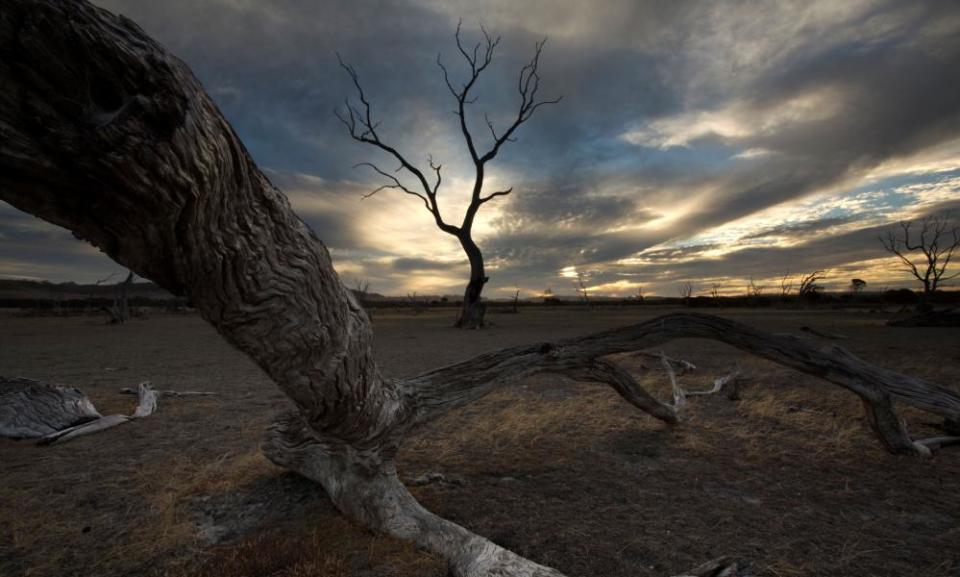The Australian book you should read next: Wake in Fright by Kenneth Cook

I knew the story of Wake in Fright long before I read Kenneth Cook’s 1961 novel or saw the Ted Kotcheff film adaptation. A friend told me the plot after an abortive attempt to leave Darwin saw me rolling back into town, cooked campervan strapped to the top of a road train. Years later I heard it again from my boss at a cafe, when I copped to blowing the previous day’s wages into regrettable fragments, returning to work shabby and unslept. In the 1990s, with the novel out of print and film’s negatives famously lost, Wake in Fright existed primarily in the staticky gloam of cult movie timeslots, its searing imagery clinging like dust on sweat to those who stumbled in.
The story is easy to recap: John Grant is a preppy east coast teacher begrudgingly stationed in an outback school. His summer plans to holiday in Sydney “where nature deposited the graces she so firmly withheld from the west” are spectacularly derailed in Bundanyabba when Grant bets everything on, as Kipling put it, “one turn of pitch and toss” and, far from proving his manhood, plummets into degradation.
Related: The Australian book you've finally got time for: The Middle Parts of Fortune by Frederic Manning
The nightmarish tension is harder to parse. It’s a particularly Australian horror story. Cold beer makes the unseemly affable, slakes a man’s mania for violence. Cooke captures the torments of an intoxicated brain perfectly. Scenes accrete like corrugations on a dirt road the reader speeds down drunk, hand plastered firmly over one eye.
This vision of Australia is ugly yet familiar. The cringingly urbane Grant despises the isolated land, contrasting this “apology for a town” to erotic fantasies of Sydney, temperate and cool like his rich-girl crush in tennis whites. His snobbery doesn’t inure him to the hard charms of Yabba folk though; brutes who treat the country like an adventure playground, pulling minerals from the earth by day, spraying blood across it by night. In the Yabba “mateship” can sustain or destroy. A mate is any man you drink with but only as long as you’re drinking.
It’s a portrait that apparently upset local film audiences in 1971. At an early screening, one outraged man shrieked “that’s not us!” and was rebuked by a young Jack Thompson, who plays a roo-shooting miner: “Sit down mate, that is us!” It’s still us in 2020, too. I recognise the mine-gouged land, the patriotic localism, nihilistic abandon. I know the condescending urban comportment and the no-bullshit bloke retort intimately. They are part of living here.
There are more nuanced portraits by younger writers though. Shaun Prescott’s 2017 novel The Town imagines a series of surreal sinkholes opening up in the central west of NSW and our very understanding of so-called Australia. He sees what Cook saw but is unafraid, “maybe inside the town there was another, parallel town, itself scarcely populated with the wandering lost, occupied by their own search for a hidden angle which could permit their access home”. In film, Alena Lodkina’s Strange Colours balances brutality with tenderness, cultivating gentle curiosity in the macho loneliness of Lighting Ridge. In both, environmental and psychological boundaries buckle around questions of gender and colonial history.
But perhaps in 1961, Wake in Fright was already surveying this terrain. According to Jacqueline Kent, Cook’s wife and biographer, the title comes from a poem about a bird who steals a cardinal’s ring and is cursed “that every night/he should dream of the devil and wake in a fright”. This lyric of theft and culpability invites a postcolonial reading. Grant notices the Indigenous man on the long train ride staring “constantly out of the window as though there might be something in the plains he had not seen before”. He alights and wonders, without asking, about the town’s name, “wasn’t yabba Aboriginal for talk?” Cook repeatedly describes the Yabba as a “dead heart”. Is Grant then an unwilling Marlow, torn from the conquest of Joseph Conrad’s 1901 Heart of Darkness to continue the bureaucratic business of 20th-century colonial administration? If so, Kurtz might be the mad, collective violence of white Australia, which thieves and decrees but does not listen or see.
Related: The Australian book you've finally got time for: Carpentaria by Alexis Wright | Tara June Winch
The novel’s most intriguing moment comes during the kangaroo massacre. Grant, high on grog, the stink of large men and dogs, aims at a roo frozen in the spotlight. The bullet strikes so hard Grant feels he’s “thrust something into the animal with his hands”. It bubbles, chokes, is dead for sure. Yet when they approach, the carcass is gone. Worse, Grant knew it would be gone. What, then, took the bullet? It’s part of Grant of course, part of all men. But which part? Exceptionalism? Higher purpose? Reason? Whatever it represents, it’s spectral; a hole in our understanding. Maybe there’s a clue in the glib existential musings that end the book. Grant doesn’t know why he exists as he does but feels he’ll “probably find out sometime”. The reader is right to be dubious as the man walks into the pub.
• Wake in Fright by Kenneth Cook is available through Text Classics
• Briohny Doyle is the author of Adult Fantasy, published by Scribe

